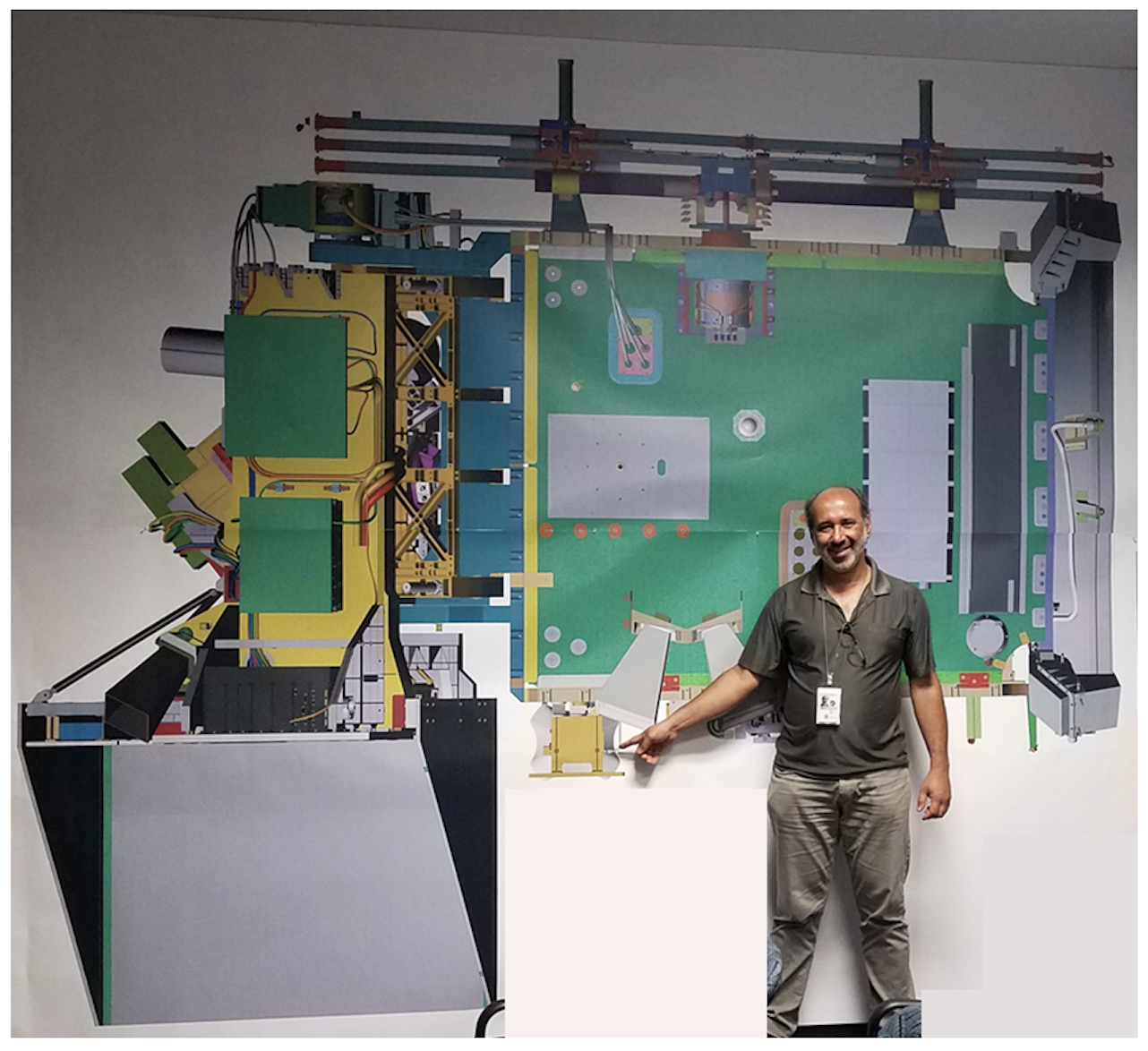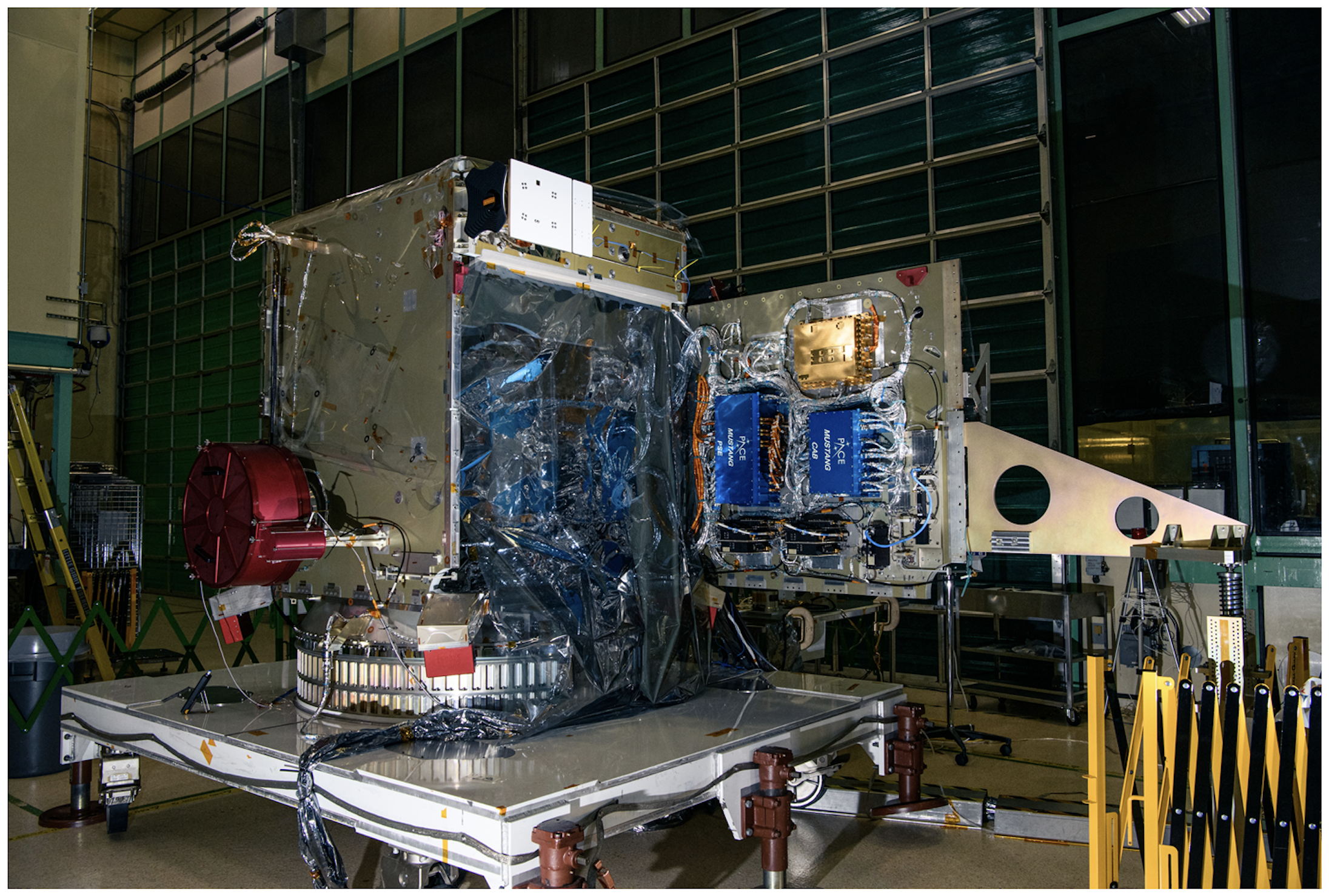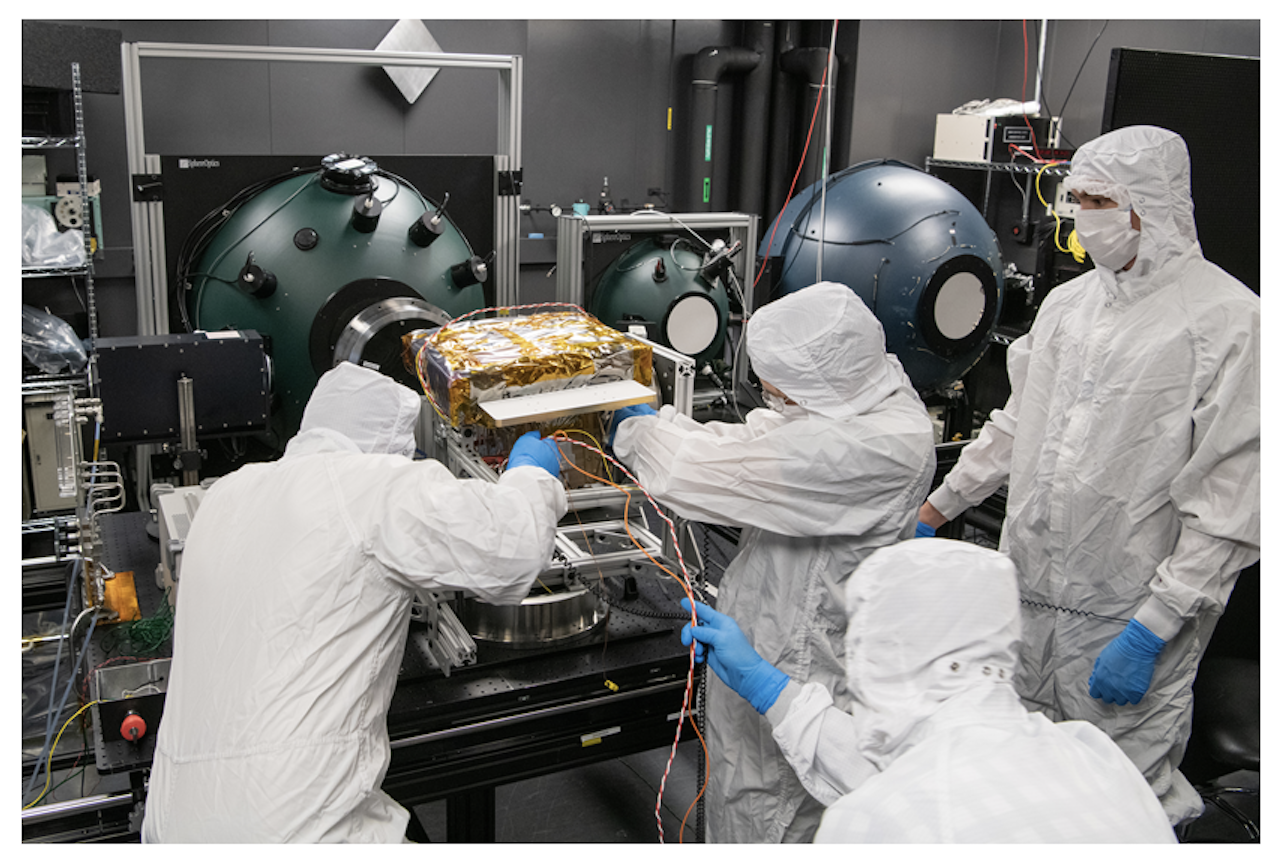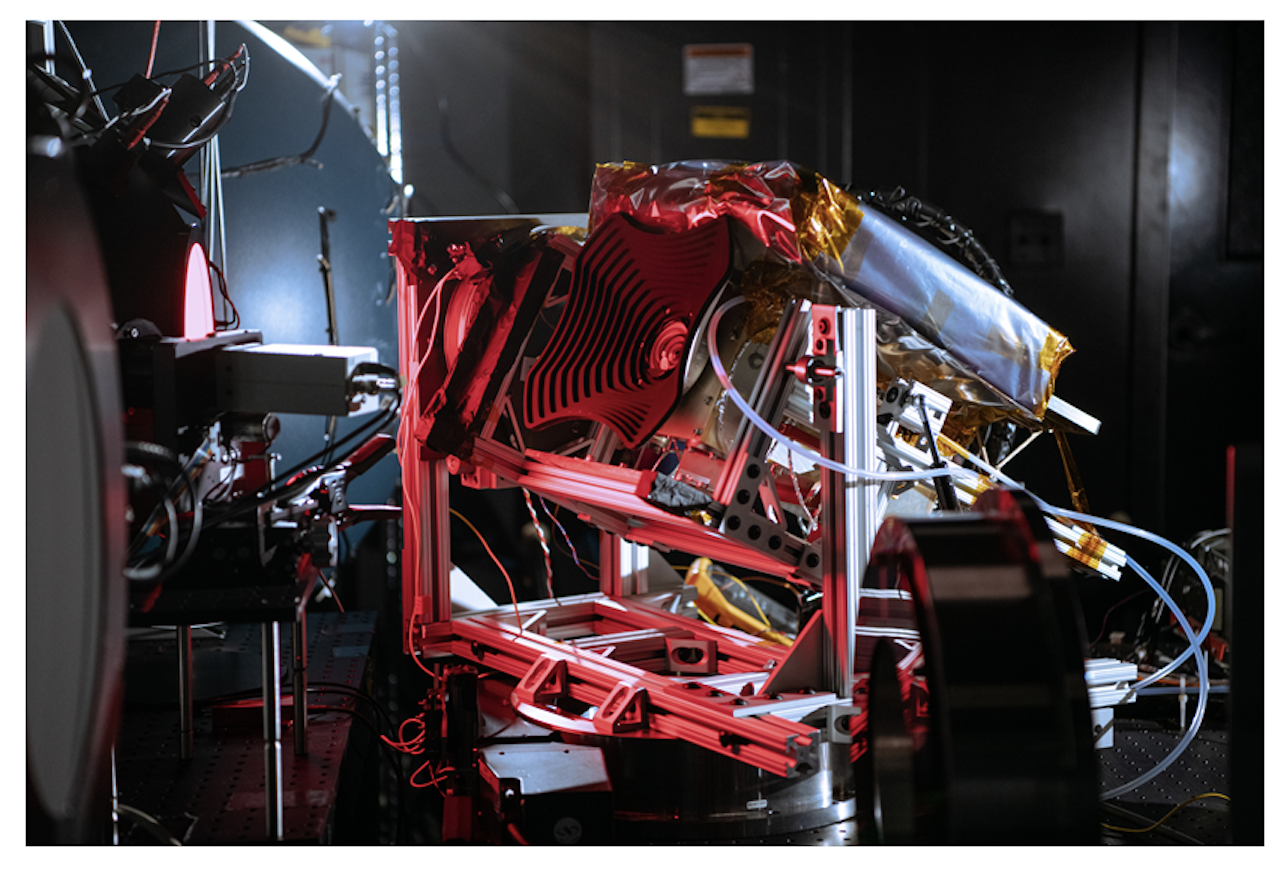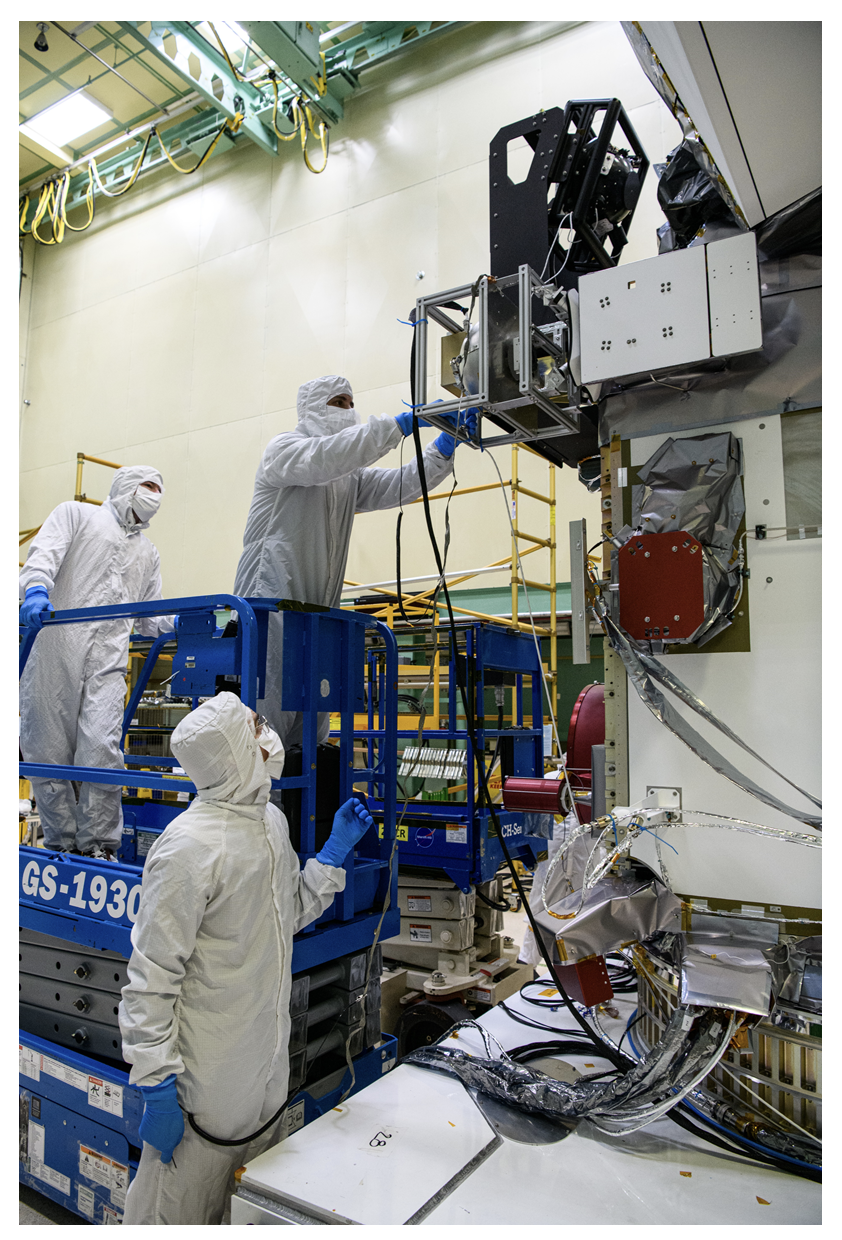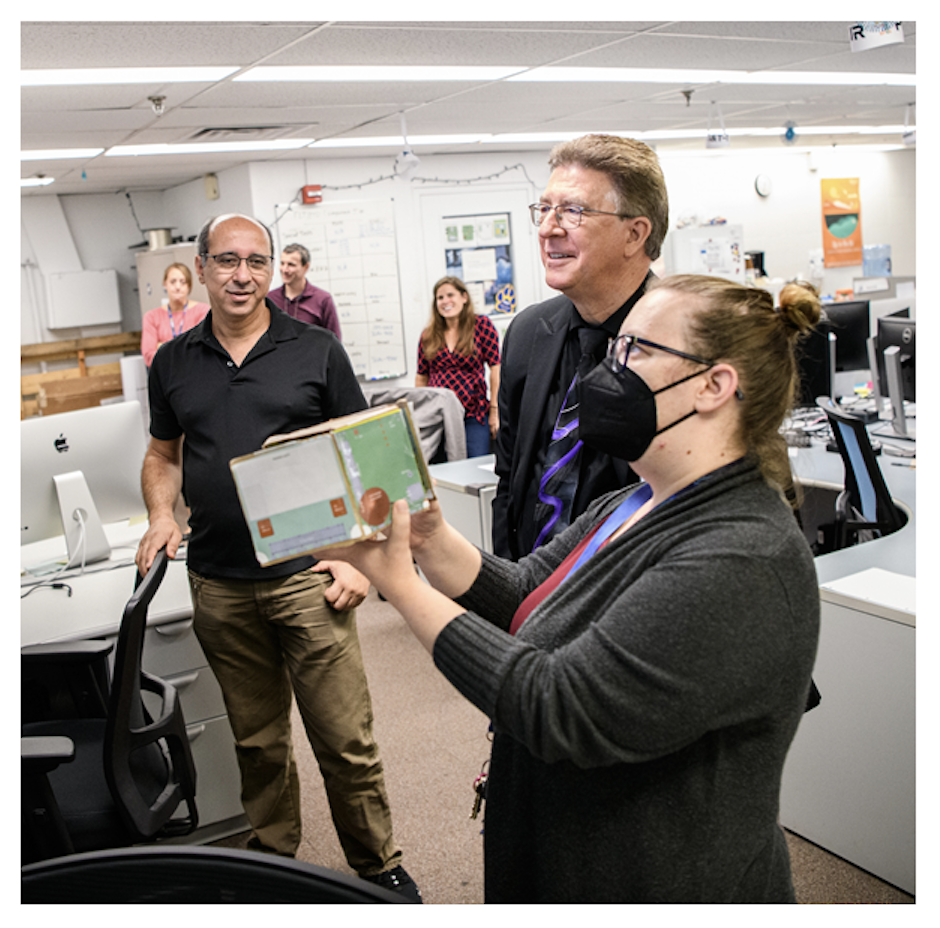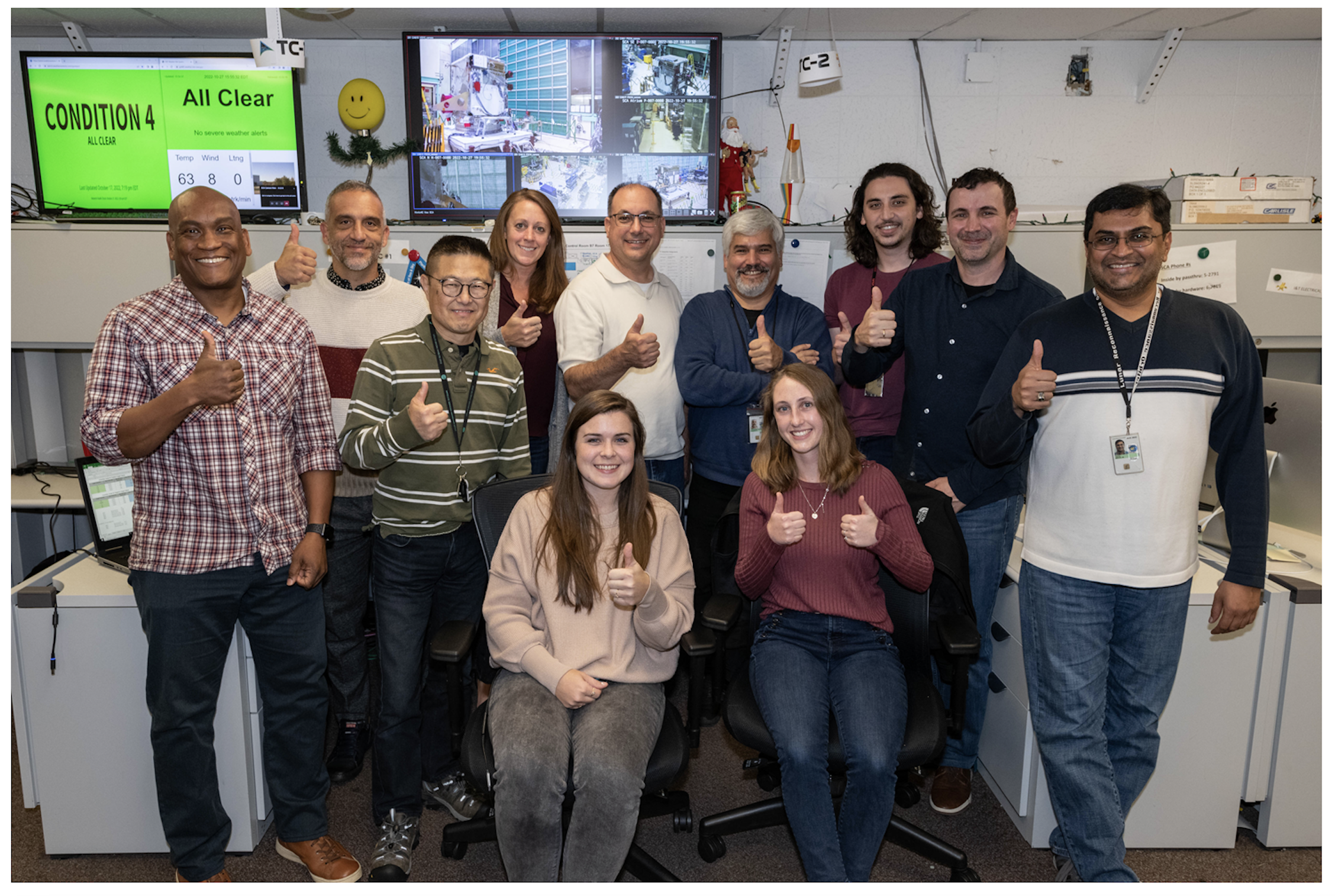A one-to-one scale model of the NASA PACE satellite next to HARP2 PI and ESI Director Vanderlei Martins.
The NASA PACE satellite in the cleanroom at NASA Goddard Space Flight Center. HARP2 can be seen at the top of PACE.
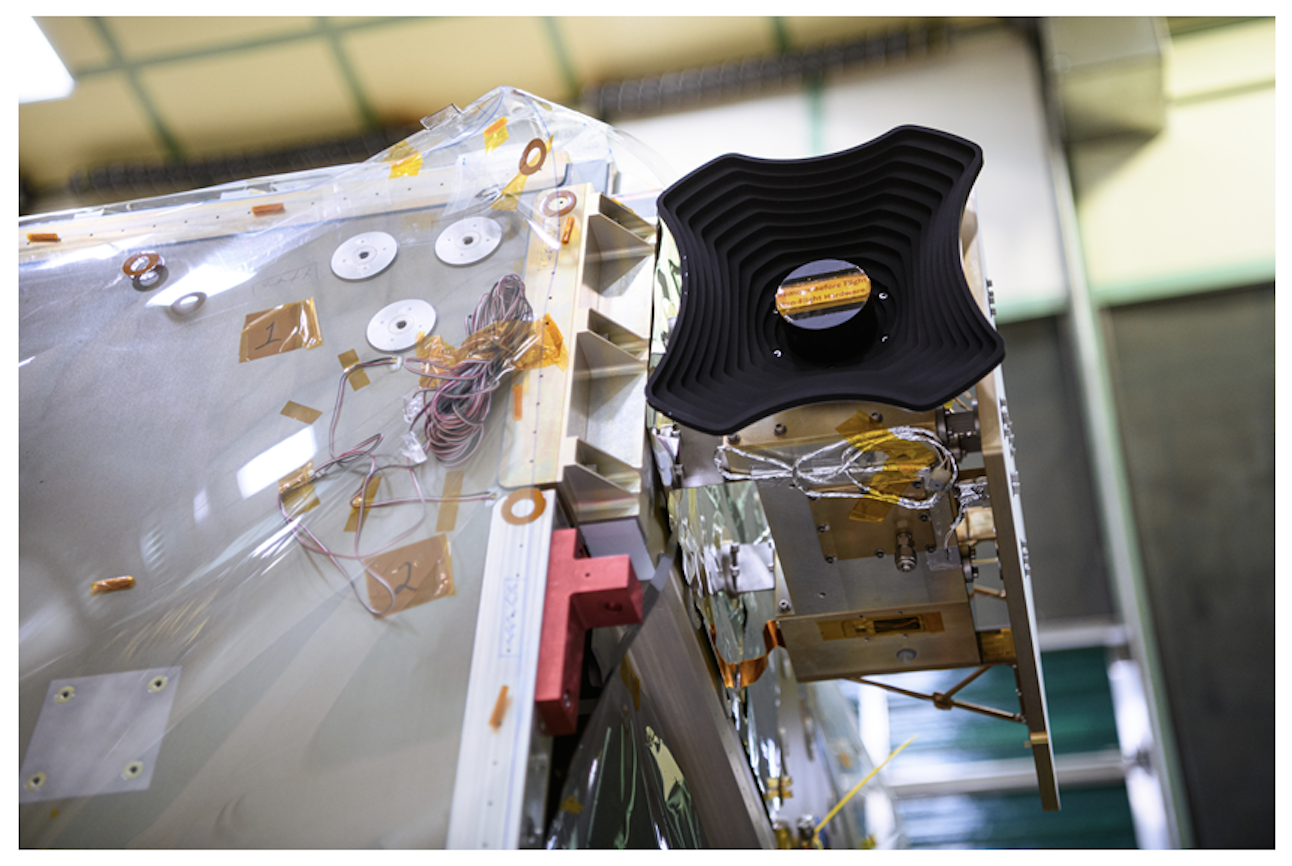
A closeup of HARP2 bolted to the -Y plate of the NASA PACE spacecraft. The front lens is covered by a lens cap that reads “remove before flight”. The black butterfly cavity is the HARP2 keep-out-zone baffle, which prevents tangential and unwanted stray light into the system. The stairstep configuration of the baffle is to mitigate possible contaminations falling in toward the front lens on-orbit.
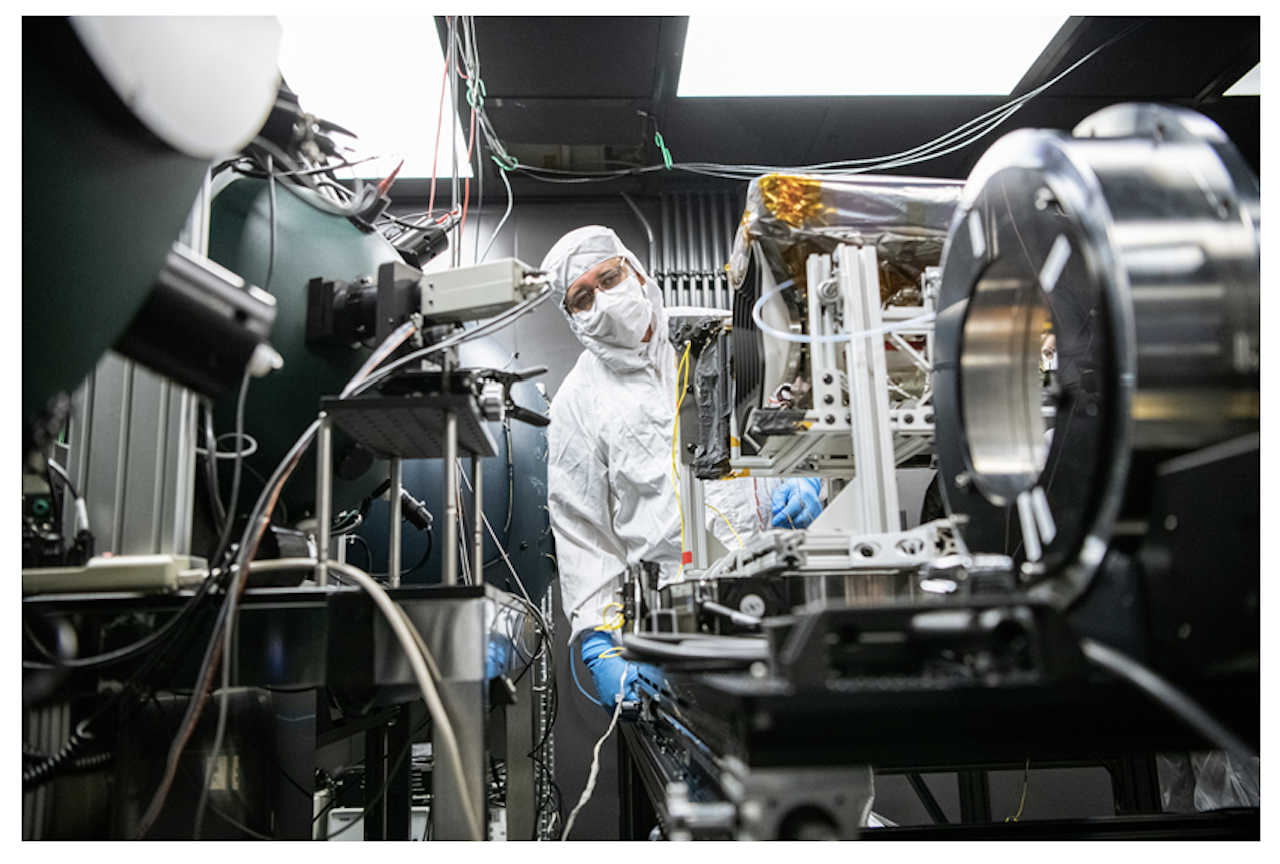
HARP2 PI Vanderlei Martins evaluates HARP2 during calibration activities at NASA Goddard Space Flight Center (GSFC).
ESI enginners prepare HARP2 for radiometric calibration at the NASA GSFC GLAMR facility in Building 33. The large objects in the background are integrating spheres. These devices are super-reflectors that are lit by several internal lamps. Their shape, surface area, and white internal paint forces light inside to scatter thousands of times before exiting the front aperture. The resulting beam is spatially uniform and unpolarized. The energy of the output beam is traceable to the National Institute of Standards and Technology (NIST).
Integrating spheres can also be used for spectral calibration, which allows us to verify which colors of light HARP2 accepts and rejects. We developed HARP2 specifically to measure light only in narrow blue, green, red, and shortwave infrared spectral bands (440, 550, 670, and 870 nm).
ESI engineers install the Optical Ground Support Equipment (OGSE) in front of HARP2, after the instrument was bolted onto the PACE spacecraft. The OGSE is an integrating hemisphere with special telescopes for detector alignment, periphery LEDs for flatfielding, and a tilted, rotating polarizer at its aperture for polarization calibration.
ESI engineers Cieslak and Nelson prepare HARP2 for thermal vacuum testing. Over 20 days, HARP2 was soaked in temperatures betwen +- 20 degrees Celsius to see how the day-night orbit environment will impact the instrument and its data. The results from this testing will help ESI scientists correct for and update the HARP2 calibration in space.
HARP2 PI Martins, UMBC Vice President for Research Dr. Karl Steiner, and PACE I&T Manager Dr. Veronica Pinnick discuss the spacecraft orientation of PACE using a simplified model.
NASA GSFC systems engineering and ESI personnel celebrate a successful thermal vacuum (TVAC) campaign.
